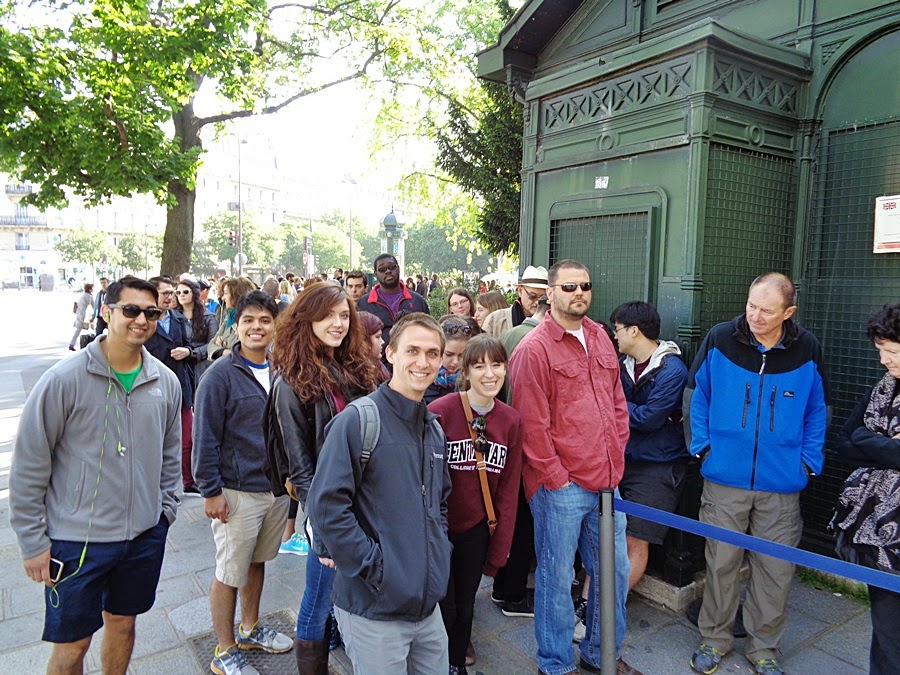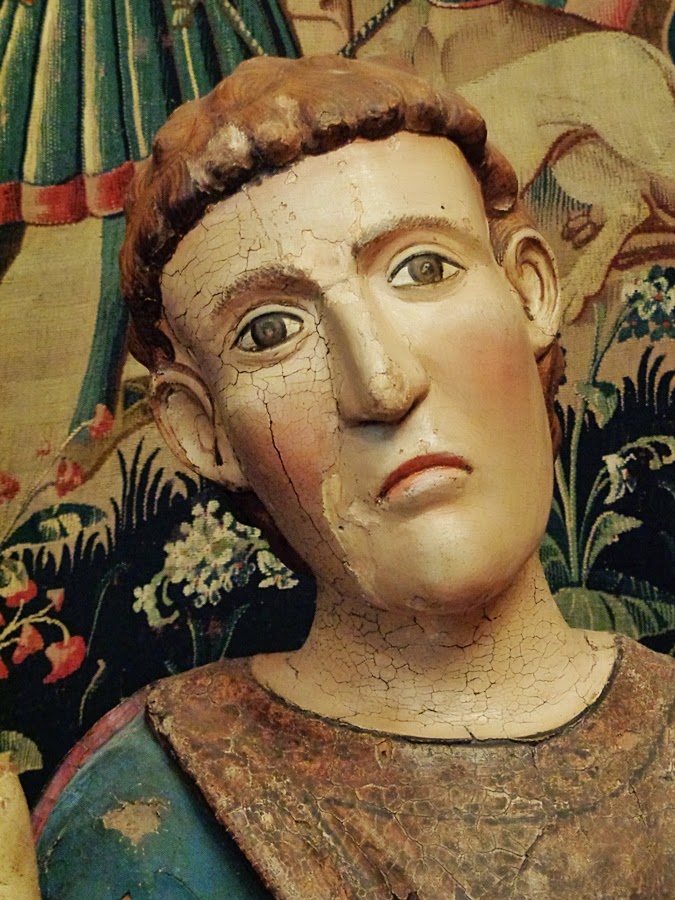Tuesday, May 13:
On a bright, perfect day in Paris, we headed first to the Luxembourg Gardens:
---------------
One of the best parts of the Gardens is the Medici fountain, a perfect place to sit
and get away from the intensity of city life.
-----------------
After the Gardens we walked by Hemingway's apartment he shared with his second wife, Pauline,
and visited St. Sulpice, the church he sometimes visited, seeking forgiveness
for leaving his first wife, Hadley.
--------------
------------------
After lunch (sandwiches from Le Bon Marché) we headed towards the Musée d'Orsay, the great museum of 19th century French painting. Along the way, we stopped long enough to pay our respects at the home of the French Prime Minister, L'Hotel Matignon (perhaps surprisingly modest -- at least on the outside -- for one of the world leaders.)
------
The d'Orsay was originally a train station and transformed magnificently during the 1980s into a great space for some of the earliest and most important modern paintings, photographs, and sculptures.
------
While the d'Orsay is most famous for its Impressionist and Post-Impressionist paintings (Monet, Renoir, Van Gogh) it also houses some of the most representative Academic paintings of the mid-to-late 19th century. One of the wildest is surely William Bourguereau's Les Oréades, a scene from Greek mythology.
----------
After the d'Orsay we headed over to the Rodin Museum. Rodin, the most famous sculptor of the 19th century, has many examples of his work on display in truly one of the most beautiful setting in the heart of Paris.
Among his most famous works there are The Thinker, The Doors of Hell, and The Burghers of Calais.
One of the reasons I personally like the Rodin Museum is that they have a wonderful outdoor cafe in the gardens where you can re-charge mid-afternoon with some coffee and macarons like these:
-----------
Literally across the street from the Rodin is Napoleon's Tomb:
And his casket, which is about the size of an SUV back in the States:
























































